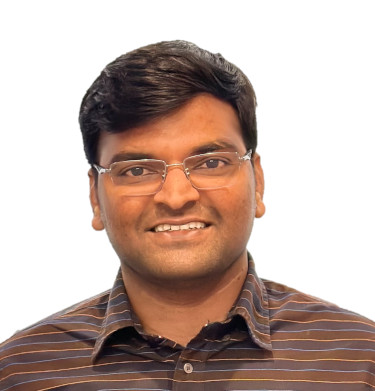The following is the eighth entry in a Q&A series highlighting selected Clinical Proteomic Tumor Analysis Consortium (CPTAC) researchers and their work. Join us as we discuss proteomic aspirations, the value of mentoring in science, and progress in multiple myeloma with Kiran Kumar Mangalaparthi, Ph.D., a Postdoctoral Researcher at Mayo Clinic in Rochester, Minnesota. Transcript is edited for clarity.
Q: Could you please provide a brief overview of your academic and professional journey?

Kiran Kumar Mangalaparthi, Ph.D.: Currently, I am a research fellow working with Dr. Akhilesh Pandey in the Department of Laboratory Medicine and Pathology at Mayo Clinic in Rochester, Minnesota. I started my academic journey at Osmania University in India where I received my bachelor’s and master’s degrees. Subsequently, I worked at a proteomics facility where my interest in proteomics was piqued. I was only responsible for sample preparation for proteomic analysis and the downstream analysis was done by other dedicated personnel on a MALDI-TOF mass spectrometer. This only increased my curiosity about mass spectrometry and wanted to explore a career in proteomics.
I joined the Institute of Bioinformatics in Bangalore, India, which was known for mass spectrometry. I pursued my Ph.D. there and focused on combining proteomics and genomics to understand molecular mechanisms in esophageal squamous cell carcinoma. While working on this project, I received an offer from Dr. Pandey to join his lab as a Postdoctoral Fellow at Mayo Clinic. That is how I have evolved from being intrigued by a mass spectrometer behind closed doors to actively working with a mass spectrometer and studying exciting multiomics projects.
Q: Could you describe your current work focusing on multiple myeloma at Mayo Clinic?
KKM: My work has focused on immunopeptidomics, PTMs and high-throughput proteomics as well as technology development. Our lab collaborates closely with the pioneering multiple myeloma clinical team at Mayo Clinic including Dr. Rafael Fonseca (who is another PI on the CPTAC grant) and Drs. Leif Bergsagel, Vincent Rajkumar, and Shaji Kumar. Our groups began to work together when we applied for the CPTAC grant and, at that time, [the clinical team] emphasized the complexity of multiple myeloma due to its high heterogeneity. Patients with multiple myeloma are treated with two major types of drugs: proteosome inhibitors and immunomodulatory drugs. Although many patients respond well to these treatments initially, ultimately almost all of them relapse. We thought of this as an opportunity to investigate the mechanisms of resistance in multiple myeloma in order to identify new therapeutic targets. To achieve this, we are employing multi-omic approaches to study cell lines, mouse model and clinical samples to explore the resistance mechanisms to IMiDs.
Q: Can you touch on the value of interagency collaboration within CPTAC?
KKM: Dr. Pandey strongly believes in interdisciplinary collaboration, emphasizing that major discoveries come from working together with different teams across diverse scientific groups. Part of the benefit is that, in science, the technology is progressing very rapidly. There are new tools coming to the market with lots of exciting possibilities. Because of this, we need an awareness of these developments as well the expertise to use them in our science — collaboration really helps in that regard. Collaboration also invites different thought processes and thoughtful critiques which benefit progress. New ideas develop all the time when scientific teams align with each other.
Q: What are some technological or scientific barriers you encounter in your work and how do you think these might be overcome?
KKM: Regarding technology — in multiple myeloma, there’s huge potential with single cell proteomics. [Years ago,] I think no one could have imagined single cell proteomics would be possible. Yet, it has become possible and is rapidly progressing. The other technology, which is progressing rapidly, is the spatial biology approach. Now, people are recognizing the importance of studying spatially distinct regions rather than studying [the disease] all together. These two technologies generate a lot of data, right? I think that brings an additional burden — you need more bioinformatics tools to handle this complex multidimensional data. Making sense of these data is a major barrier currently.
Q: Do you have any advice for someone interested in following your career path or a similar one?
KKM: I think that the most important piece of advice is to stay positive. The research does not always go as planned — that’s how research is. Especially as you become a postdoc, it is crucial to develop critical thinking skills because if you intend to be an independent research fellow you need to be able to develop and address research questions.
You also need to find the right mentor. Your mentor will be very, very helpful in shaping how you think and how you do your work. In addition, networking is something you should start early and continue throughout your career, because true collaborations often emerge from the connections you build. Ultimately, you should stay positive and keep moving forward. Don’t take anything as a “do or die” situation. Apply yourself and leave the rest to the reviewers; all you can do is keep working on the next problem.

